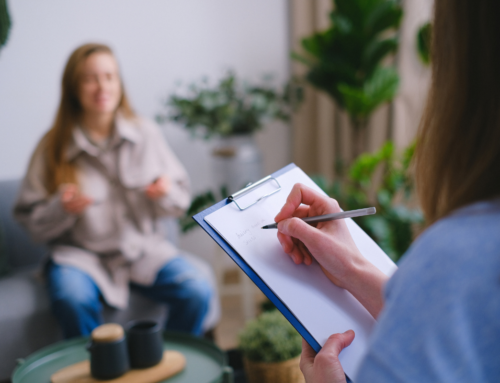
When you struggle with negative body image, the possibility of ever having positive body image may feel like an unreachable goal. So I was intrigued by a paper published in the journal “Body Image” that explored the experiences of 25 women who self-identified as having a body that that doesn’t align with societal norms of how a body “should” look or function — yet overcome their negative body image to develop a positive body image.
Through one-on-one interviews, the researchers sought to gain insight and nuance into the women’s journeys from negative body image to positive body image, looking at what characteristics they had in common.
Before I get into what they found, let’s look at how body image researchers define both negative body image and positive body image.
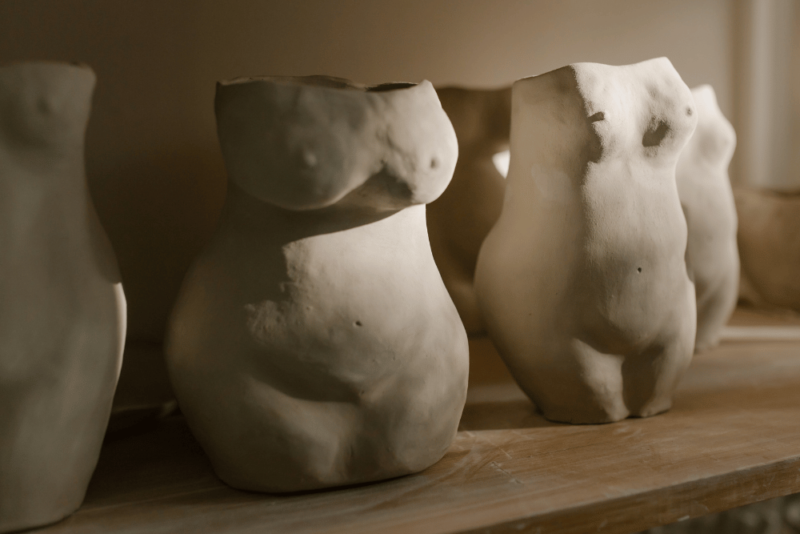
What is body image?
Body image research used to focus on the effects of negative body image, which has been defined as “a persistent report of dissatisfaction, concern, and distress that is related to an aspect of physical appearance.”
Because negative body image is appearance-based, it doesn’t really capture the experience of living in our bodies and can’t really predict our level of well-being. So reducing negative body image might help you feel better about your body, but not necessarily feel better in your body.
Fortunately, body image research in the last few decades has shifted to focus on positive ways of living in the body, which can be divided into two overarching perspectives: positive body image and positive embodiment.
Having positive body image is not the same as having low levels of negative body image and it’s also not the same as having high levels of body satisfaction. If you like how your body looks, this doesn’t necessarily mean you have positive body image.
That’s because positive body image is not merely the opposite of negative body image. There are elements of positive body image that contribute to well-being above and beyond the amount of negative body image someone might experience. Also, you can experience positive and negative body image simultaneously.
From a research perspective, positive body image is an overarching love and respect for the body. This extends beyond a focus on appearance to appreciating how the body feels and functions, as well as interpreting information in a body protective manner. For example, if someone has positive body image, and they receive criticism about their weight, they are not going to internalize that criticism and interpret it as “My body is wrong, so I better go on a diet to try to fix it.”
So, if you manage to reduce symptoms of negative body image but don’t enhance positive body image, you will likely end up with at best, a neutral body image.

The umbrella of positive body image and embodiment
Under the umbrella of positive body image and positive embodiment are several concepts that reflect positive ways of living in the body. They include:
- Body appreciation. Having a favorable opinion of the body regardless of appearance
- Body functionality. This describes everything the body can do, including physical capabilities, creativity, communicating through body language, self-care, internal processes like digestion and breathing, and our use of our senses.
- Body image flexibility. Acceptance of sensations, perceptions, feelings, thoughts and beliefs that make up the body experience while engaging in life in ways that are meaningful to you and aligned with your values. An example of this would be not letting thoughts of “I’m too fat to wear a bathing suit” stop you from going to the water aerobics class you love or going to the beach with your kids. Another example would be not letting how you feel about your body at the moment dictate whether or not you go to the party you were invited to that evening.
- Mindful attunement and self-care. This encompasses mindful, non-judgmental awareness of the present moment and attuned, sustainable self-care that supports mind-body health
- Intuitive Eating. This includes being connected to, trusting in, and responding to the body’s internal hunger and satiety cues.
- Attunement with exercise. Having physical activity experiences that reflect being in the body and caring for the body. This may also be referred to as joyful movement.
As you can see, positive ways of living in the body extend far beyond reducing appearance-related concerns, distress and satisfaction.
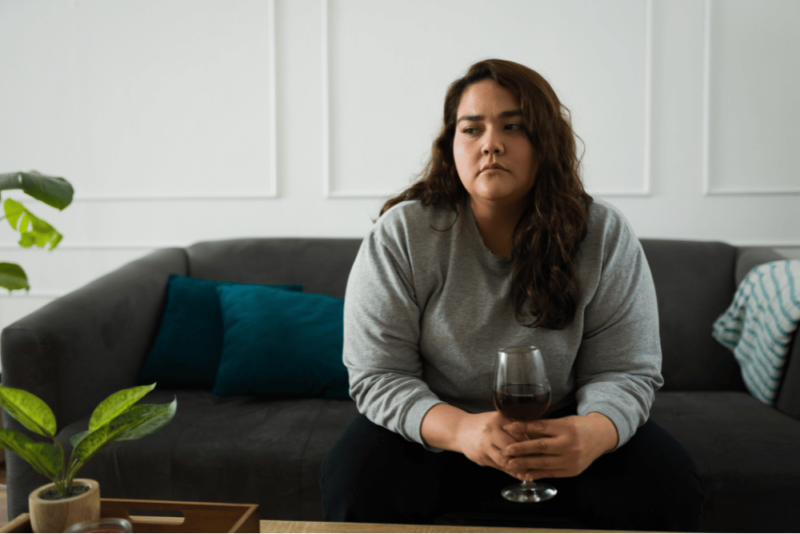
Contributors to negative body image
Turning back to the study I mentioned, the researchers found that as girls and young women, each of the women had viewed their bodies as deficient, abnormal or “less than” due to factors such as body size, ethnic background, skin color, sexual orientation, body hair, physical health or physical ability.
Some of the women had participated in sports, such as ballet or gymnastics, that put additional pressure on them to look a certain way or made them feel like their bodies were a tool for other people to use (such as coaches), rather than belonging to them.
Most of the women had experienced trauma and abuse — whether verbal, physical or sexual — and described feeling sexually objectified from an early age. This included being on the receiving end of sexualized comments and stares from peers, teachers and strangers. Many said there was “open permission” for family to comment on their body and other’s bodies. Almost all said their mothers had negative body image and made disparaging comments about their own bodies.
The bottom line was that the women learned from an early age to view their bodies as deficient and deserving of the negative treatment they experienced. They felt uncomfortable in their bodies and in the world, and experienced feelings of shame about their bodies. This made them want to become as small as possible and avoid being seen.
All of this, not surprisingly, lead to disordered eating and exercise behaviors, and in some cases actual eating disorders. Some also engaged in sex that “felt disembodied and unsafe.”

The journey to positive body image: themes
The women described their journey toward positive body image as not being perfectly linear. One woman said it was “an ongoing journey, with ebbs and flows.” Another said her journey had “multiple pivots and turns along the way.” One said, “You don’t always have to be like, ‘Okay I feel 100% all the time about my body.’ That’s not realistic at all.”
Some experienced the transition from negative body image to positive body image has having noticeable shifts over the years while others felt their journey was built more on a “collection of moments over the years.” But regardless of the pacing of the journey, the women said maintaining a more positive body image was part of their broader, ongoing commitment to their well-being.
The researchers identified 12 overarching themes that involved processes and experiences that were associated with the women’s shifts in body image.
“Enough is Enough.”
The first theme is that each of the women had an epiphany, a wake-up call or a point where they had hit rock bottom. It was a moment where they realized something needed to change, and that it was important to start building positive body image.
For some, it was the realization that disordered eating was not the path they wanted to go down anymore, or that they wanted to avoid relapsing after eating disorder recovery. For others, this involved giving an ultimatum to or setting boundaries with a family member who was relentlessly critical (one woman said “I’ll never sacrifice my well-being again. I’ll never give up my power again.”)
Overall, the women reached a point where they no longer tolerated harmful relationships or comments from other people, and would stand up for others who made negative comments about themselves or were being treated unfairly.
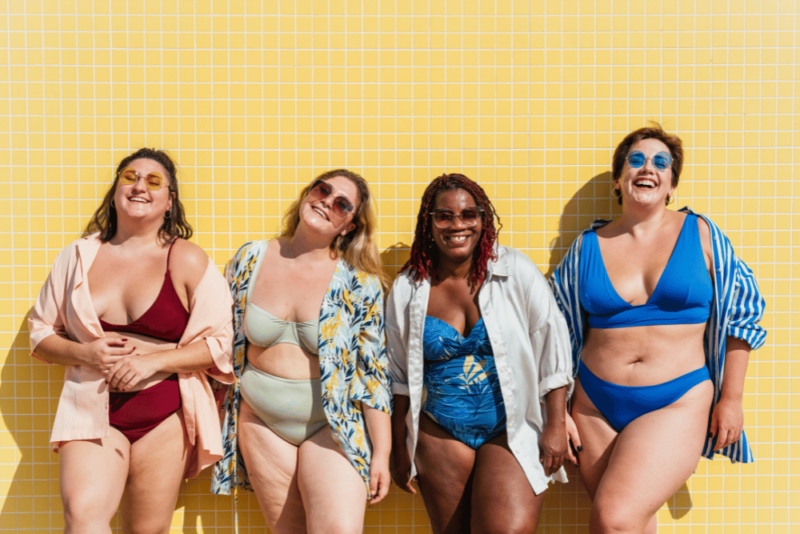
“Social Connections and Community” and “Access to Critical Knowledge”
Most of the women realized the importance of finding people who loved and accepted them for who they were and how they looked. This included supportive romantic partners and/or friends and colleagues. For some women, minorities communities or online communities were an important part of their journey. And a few found they had supportive family members.
Gaining new knowledge was also universally important, because it taught the women that thoughts are not reality, and that they could challenge their thoughts — and that they could be critical of and challenge the legitimacy of societal norms.
How they accessed this knowledge varied: therapy, reading research papers on weight bias, seeking out self-help resources, coursework or groups related to social justice, social media or online communities, minority communities, or exploring religion or spirituality. One woman referred to this as working on her “cognitive fitness.”
Through this, the women realized they were not alone and that the negative experiences they had in their bodies weren’t their fault. Their new knowledge opened up new and adaptive perspectives of seeing themselves, and the world.

“Joyful Movement” and “Adaptive Appearance Investments”
Enjoyable physical activity can open the door to appreciating body functionality, which is a key element of positive body image. It also enabled women to experience joy and pleasure in their bodies, which is an element of positive embodiment. One woman said she loves Zumba because she feels happy and carefree dancing to uplifting music.
For some women, physical activity led to a sense of achievement and pride from challenging themselves. For others, it led to supportive social connections and communities. For example, joining a running group or taking a body-positive yoga or dance class.
Overall, the women in this study practiced physical activity to take care of themselves and, experience joy in their bodies and connect with others — not to punish or to change their body.
Many of the women interviewed made modifications to their appearance that helped them feel more positive about their bodies. If you’ve ever felt pressure to modify your appearance to meet some external beauty or gender standard — dieting, dressing “appropriately,” not being seen without makeup, etc. — what these women described is very different. None of these appearance modifications could harm the body, and they weren’t intended to camouflage or hide the body.
The focus of their appearance modifications was focused on expressing their identities, emphasizing characteristics they appreciated about themselves, and feeling comfortable. This included haircuts, clothing and makeup, but for some women it included tattoos, and one woman found that learning to sew clothing was a wonderful way to not just clothe herself, but to express herself.
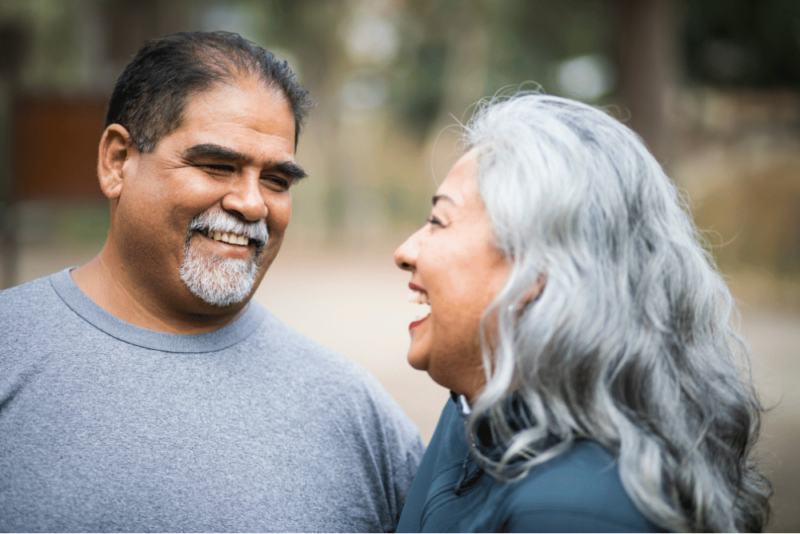
“Becoming Older and Wiser”
Aging can certainly contribute to negative body image in many women, but it can also help support positive body image, depending on mindset. Many of the women interviewed said that aging contributed to their positive body image journey because they began caring less about other people’s opinions and felt more secure about who they were.
They relied more in internal validation and on the external validation of the people who accepted them for who they are.
(Let’s all read that one more time!)
They became more accepting of their changing bodies and even when they did have body concerns, they became less important, in part because they appreciated that life is short and time is precious. One woman said:
“When you’re younger, like you’re being trapped in this one bubble. And at the time, it’s all that matters, even though you know there are other bubbles of worry at the same time. Whereas like, as you get older, it kind of becomes more like carbonation, where they’re all still there, and you can feel them. But they’re not like choking you at the moment.”
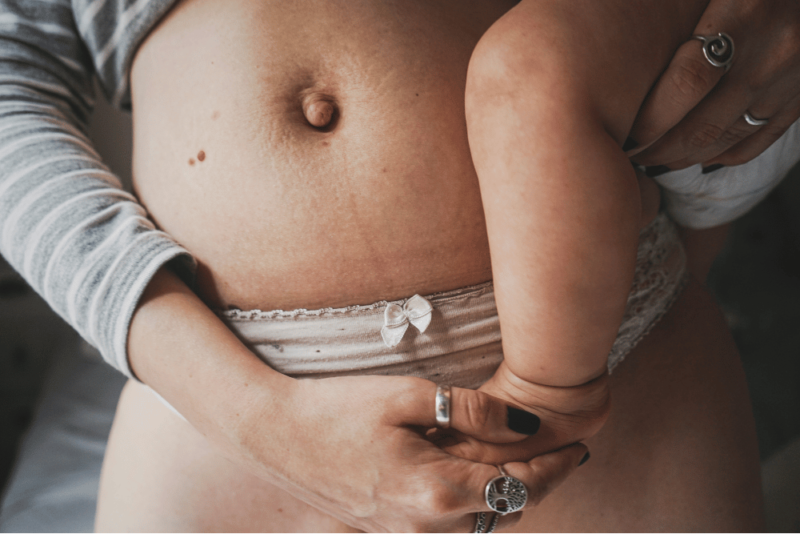
“Illness and Medical Conditions” “Pregnancy and Motherhood,” “COVID-19 Pandemic” and other themes
While illness or pregnancy weren’t experienced by all the women, for those who did, they also helped orient them towards what is really important in life. It also helped them shift towards taking care of their bodies and appreciating their body functionality.
Going through the pandemic also helped many of the women reconsider their priorities and how they spent their time — in part because it heightened their awareness of their mortality and the importance of their healthv— but it also offered them protection from society’s gaze, and limited the opportunities for social comparison. Women also started dressing to please themselves.
Learning to eat intuitively is another theme that was important for many of the women, as they learned that eating could be joyful and a way of connecting with others, and also that food was a source of nourishment and could help them take care of their body functionality.
Many of the women said they benefitted from changing societal norms toward body positivity, including greater representation of different body shapes and size, skin colors and abilities in the media. Even when women didn’t see people who specifically looked like them on TV or social media, they derived benefit from seeing women who don’t meet conventional beauty standards but are comfortable with themselves.
Spirituality, religion and nature also helped many women see their bodies as part of something bigger, and inherently worthy of love and respect. One woman “likened her body to a tree, each one unique and beautiful; why would we not view our bodies in the same way, given that our bodies are part of nature?”
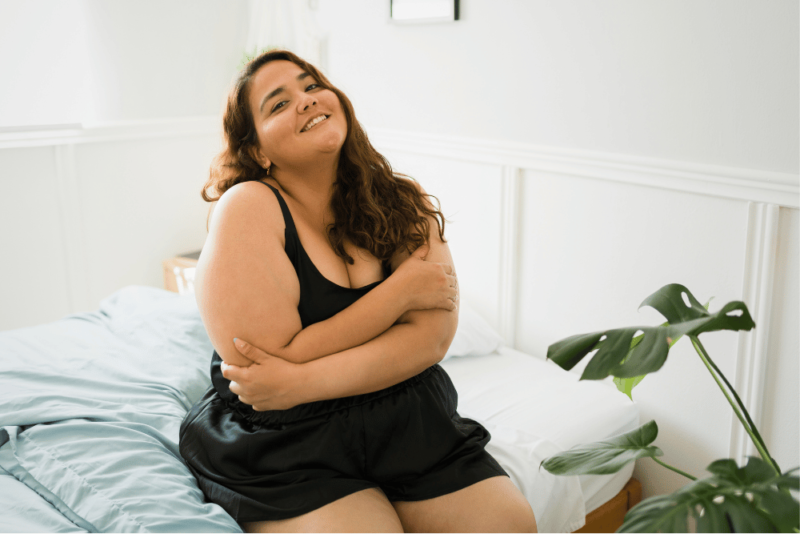
The four “Bigger Lessons”
The various themes that women experience as they move towards positive body image are richly interwoven and together express four broader shifts (or “Bigger Lessons”) in how they experienced their embodied selves in the world:
- I am more than my looks. Appreciating your body functionality
- I am more than my body. Knowing you have value beyond what you look like.
- I am more than my self. Learning to appreciate your place within broader communities, society and the universe.
- I am inherently worthy of love, respect, and joy. Treating yourself as you did when you were a baby (this makes me think of Sonya Renee Taylor’s book “The Body Is Not an Apology.”)
- So what can you learn from this if you struggle with negative body image?
One place to start would be to take in as much information as you can about the harms of society’s pressure to look and function a certain way. I already mentioned Sonya Renee Taylor’s book, but another good one is “More Than A Body: Your Body Is An Instrument, Not An Ornament” by Lindsay and Lexie Kite.
If you have experienced trauma or abuse, getting help from a therapist to process what happened to you then and how it’s affecting you now is important. One book I also recommend is “Anchored: How to Befriend Your Nervous System Using Polyvagal Theory” by Deb Dana.
You can explore if you are taking meaningful, valued actions in your day-to-day life — or if you are avoiding situations because you don’t like your body and fear it will be judged. Sometimes exposure therapy (“face the fear and do it anyway”) is something you can embark on yourself, but sometime you will need the support of a therapist. You can also ask yourself how your future self would feel about not having fully participated in life because of appearance-based concerns.
You can explore your relationship with movement. Are you avoiding exercise because you tell yourself you aren’t capable? Do you only exercise to try to influence how your body looks? Could you find forms of movement that feel good in your body and bring you joy or help quiet your mind?
You can start to emphasize dressing for comfort — physical and emotional — rather than trying to choose clothes that are “flattering” or “appropriate.”
You can take steps to shut down diet/food/body talk, whether that’s not engaging, removing yourself from the conversation, or actively pushing back against those types of conversations. Boundaries, baby!
Related Articles:
- It’s summer. Why are you still covering your body?
- Why I’ve traded body positivity for body liberation
- The futility and peril of food and body shame
- What if trying to lose weight feels easier than body acceptance?
- How to deal with a body image downward spiral
- What is embodiment? The power of body stories
- Why fat talk, diet talk and body shaming are big problems
- Is body positivity achievable? Is there something better?
- The intersections of diet culture, ableism, healthism and anti-fatness
This post contains Amazon Affiliate links. As an Amazon Associate I earn from qualifying purchases.
Disclaimer: All information provided here is of a general nature and is furnished only for educational purposes. This information is not to be taken as medical or other health advice pertaining to an individual’s specific health or medical condition. You agree that the use of this information is at your own risk.
Hi, I’m Carrie Dennett, MPH, RDN, a weight-inclusive registered dietitian, nutrition therapist and body image counselor. I offer compassionate, individualized care for adults of all ages, shapes, sizes and genders who want to break free from eating disorders, disordered eating or chronic dieting. If you need to learn how to manage IBS symptoms with food, or improve your nutrition and lifestyle habits to help manage a current health concern or simply support your overall health and well-being, I help people with that, too.
Need 1-on-1 help for your nutrition, eating, or body image concerns? Schedule a free 20-minute Discovery Call to talk about how I can help you and explore if we’re a good fit! I’m in-network with Regence BCBS, FirstChoice Health and Providence Health Plan, and can bill Blue Cross and/or Blue Shield insurances in many states. If I don’t take your insurance, I can help you seek reimbursement on your own. To learn more, explore my insurance and services areas page.
Want exclusive content on nutrition, health, diet culture and more, plus critiques of nutrition and health journalism? Subscribe to my Food Noise newsletter! 📣
 Print This Post
Print This Post

